
27. French Pete Creek
Summary
Length – 1.75 - 4 miles one way
Difficulty – Easy - Difficult
Season – Summer to autumn
Elevation range – 1,840 feet – 2,800 feet
Human imprint - Minimal
Information - Willamette National Forest, McKenzie River Ranger District
Primary old growth features
Recently burned, mixed Douglas-fir old growth
Description
The French Pete Creek area was an early front in the protracted political warfare surrounding the fate of Northwest old-growth forests, and was eventually added to the Three Sisters Wilderness in 1978. This historic event marked the first time a large block of highly prized, low-elevation forest was reserved from logging in the Willamette National Forest. While most of the basin is occupied by a mature forest that originated following fires in the mid-1800s, isolated pockets of older trees dot the lower slopes.
The west end of the drainage recently experienced two fires that altered the character of the forest. The Rebel Fire burned northward down to the creek in 2017, closely followed by the Terwilliger Fire a year later burning southward until reaching the Rebel Fire footprint. Both fires burned with moderate severity in this area leaving most large trees scorched but alive. However, most understory and mid-canopy trees were killed by the fires, and small patches of forest were severely burned killing the older overstory trees as well. Bigleaf maple sprouts and seedlings are abundant in portions of the forest.
Lower French Pete Creek Trail (3311) parallels the namesake creek allowing close observation of moderate-severity fire effects. Surviving old Douglas-fir vary from scarce to numerous in the first 1 ¾ miles amid areas of young and mature forest. This easy hike abruptly changes at the first ford of the stream. Although the ford is quite manageable during low stream flows, it can be an impossible to merely hazardous proposition at other times. Trail maintenance also becomes infrequent to non-existent after this first stream crossing. Turn back here unless stream flows are low and you are prepared for wilderness conditions.
The trail continues through a less severely burned riparian area featuring numerous western redcedars, and recrosses the stream a mile later. After the ford the trail resumes in younger forest on the north bank of the stream. Old trees increase in abundance shortly after crossing a rocky slope sparsely stocked with scrubby Oregon white oak and a few large incense-cedar. A nicer grove of old-growth giants is soon reached, featuring large Douglas-fir. Pick a spot for a break, then return the way you came.
25 years of change
The two fires described above have significantly changed the character of the hike, although most of the largest trees are still alive. The trail no longer appears to be maintained past the first stream crossing and should only be attempted by experienced wilderness hikers.
How to get there
Turn south onto Aufderheide Drive (Forest Road 19) from the McKenzie Highway (State Route 126), approximately 49 miles east of Eugene. Follow FR 19 past Cougar Reservoir and Terwilliger Hot Springs until spotting the French Pete trailhead on the left side of the road across from the French Pete Campground 11 miles south of the highway.

Unburned floodplain patch

French Pete Creek, low flow
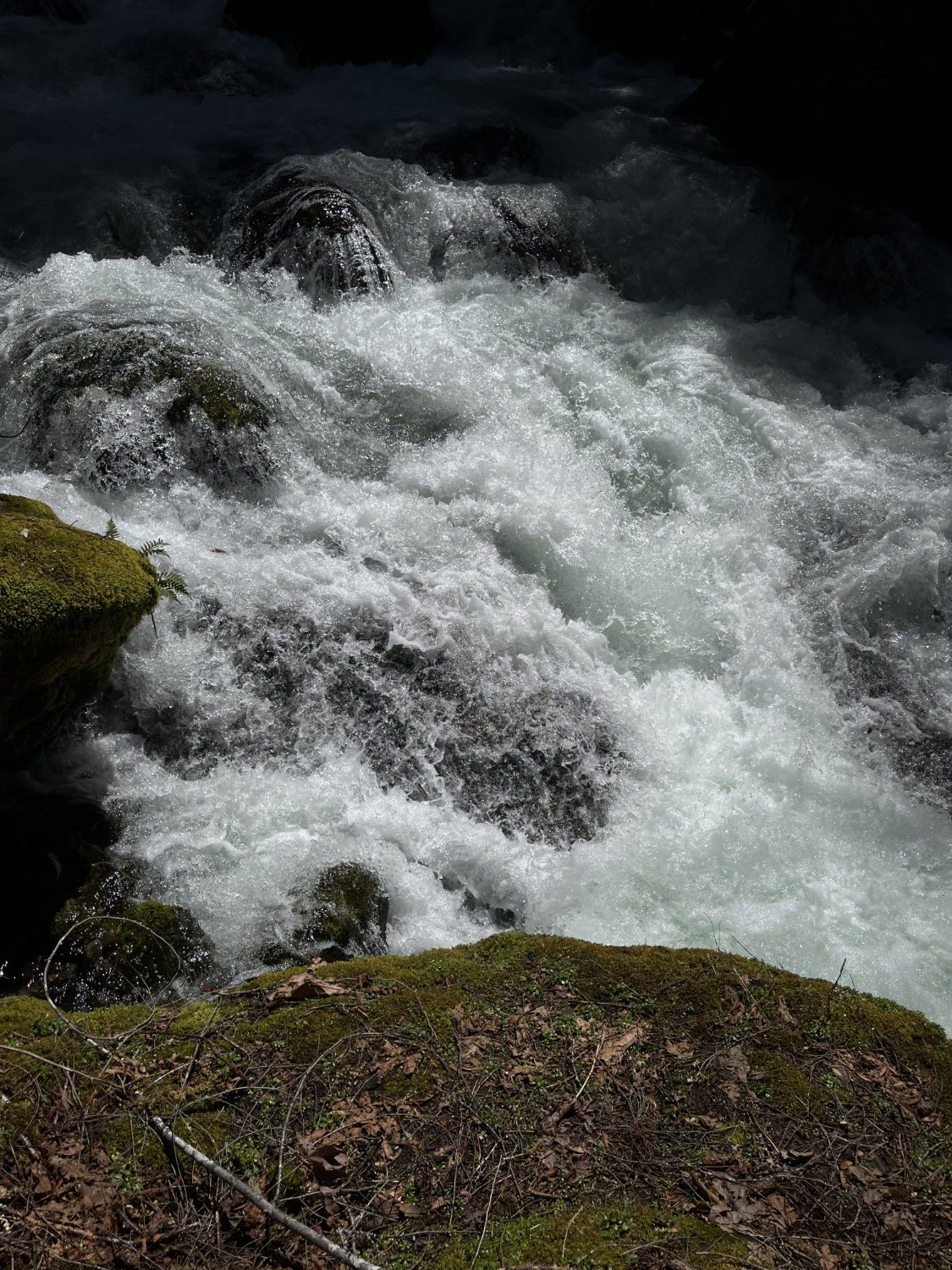
French Pete Creek, high flow
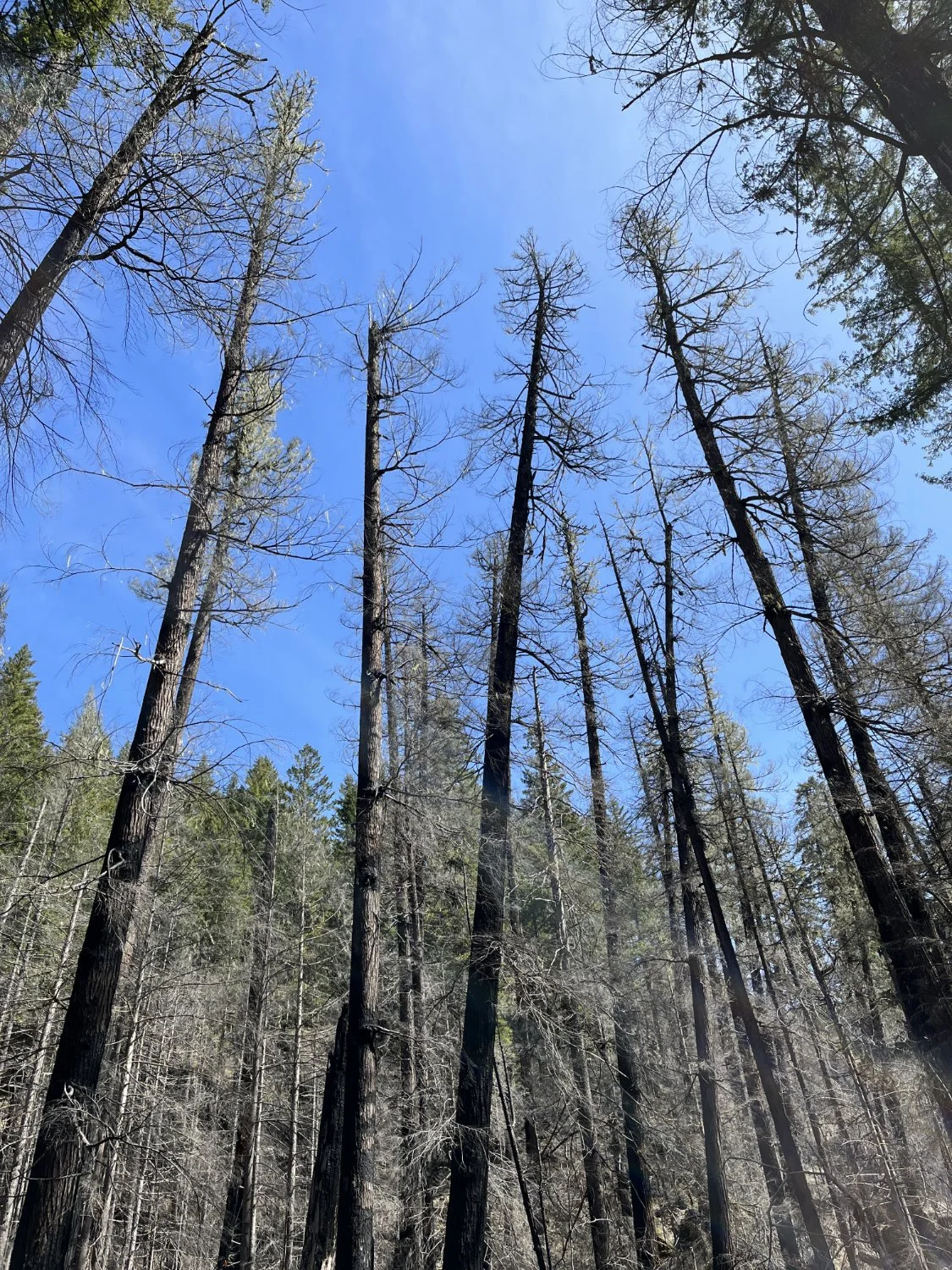
Overstory mortality
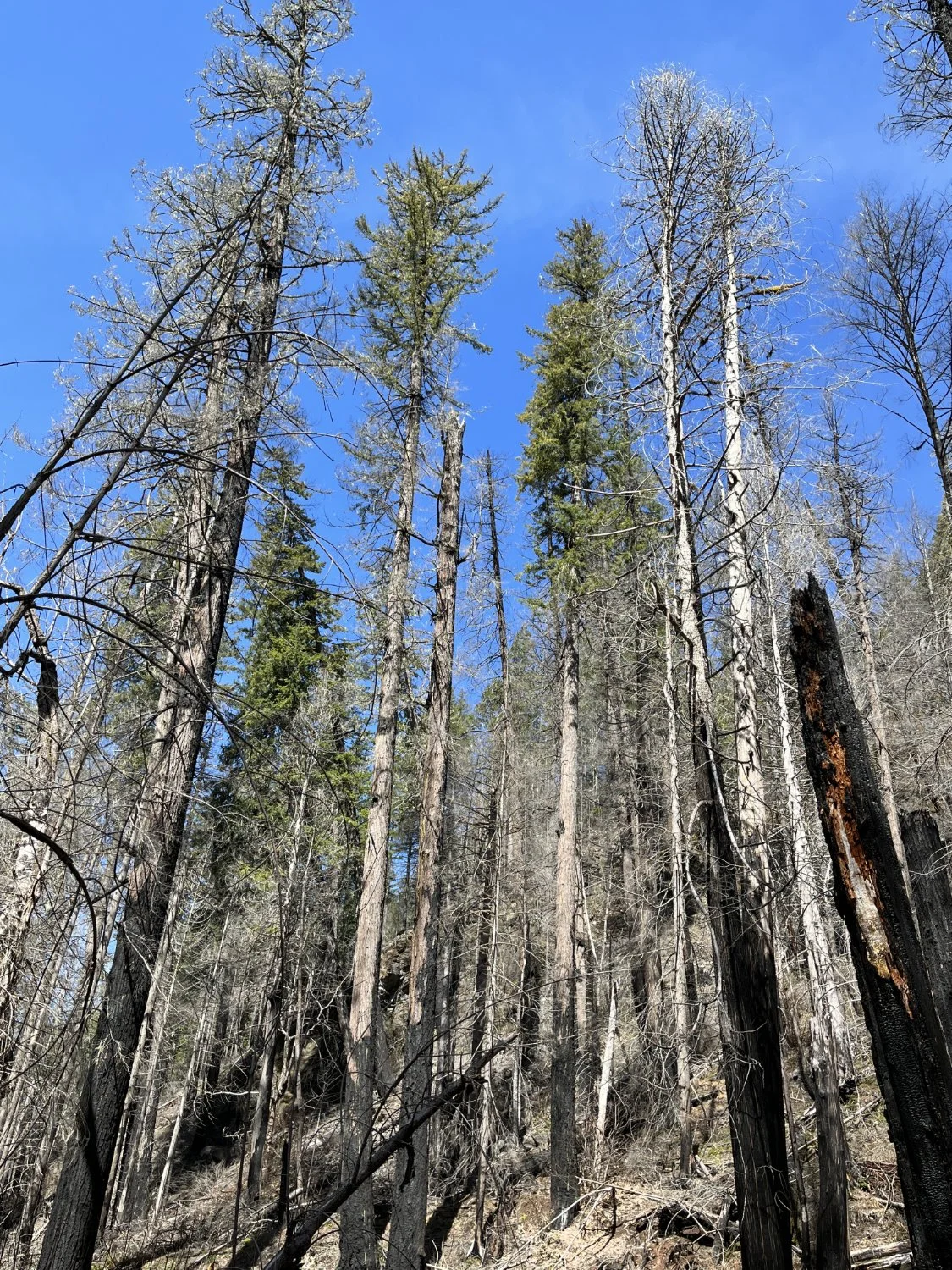
Mixed mortality
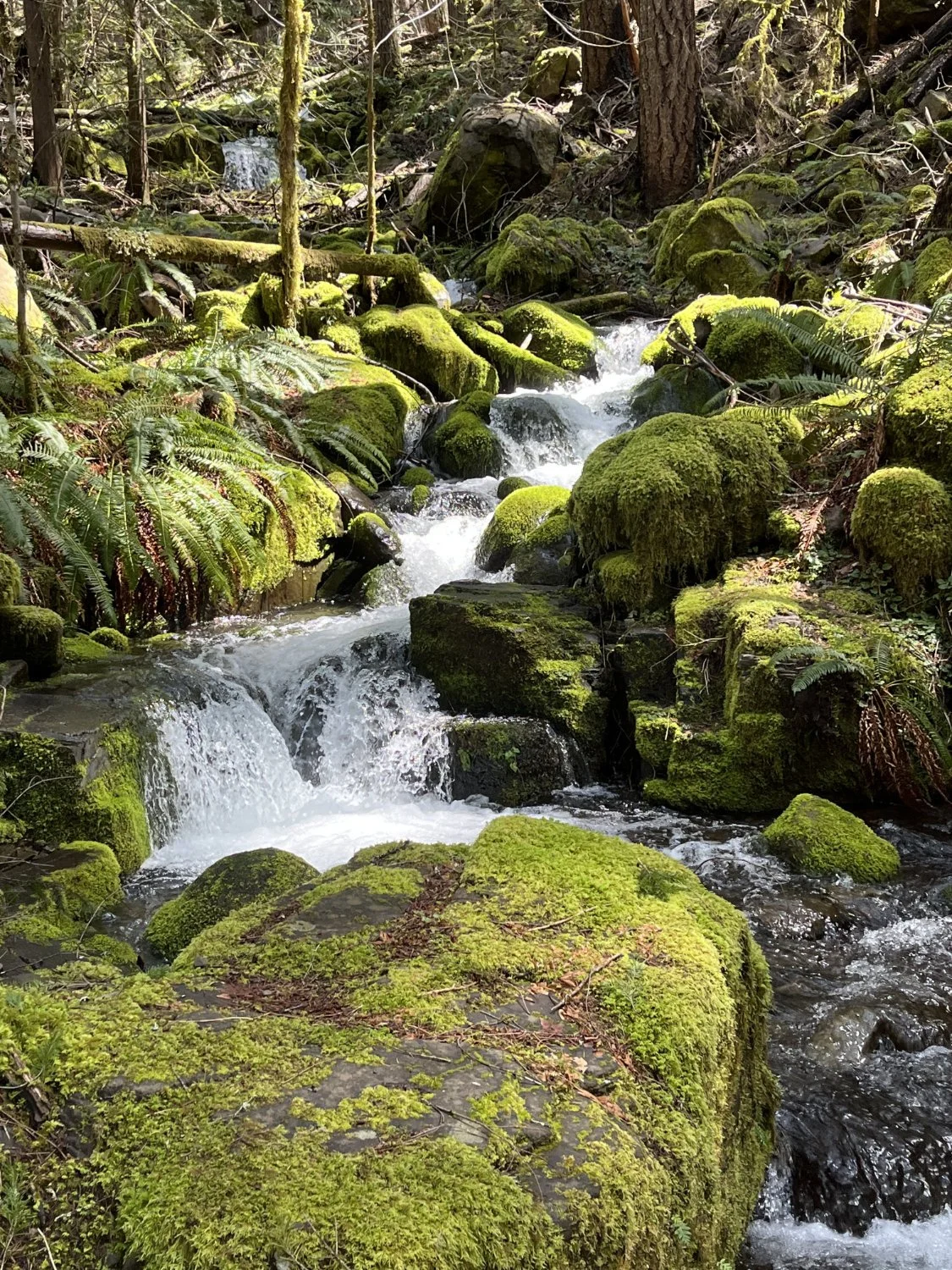
Tributary stream
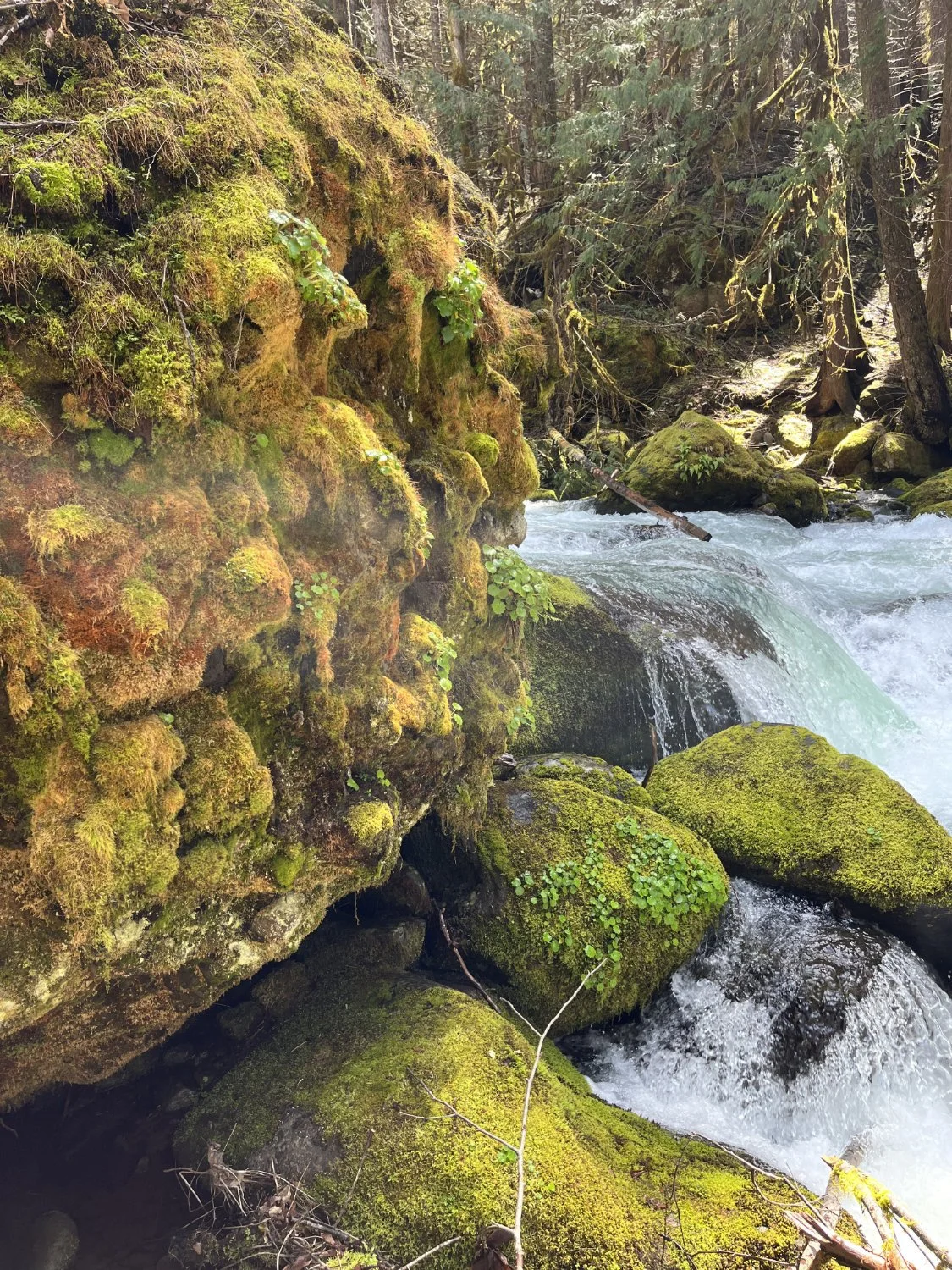
French Pete Creek
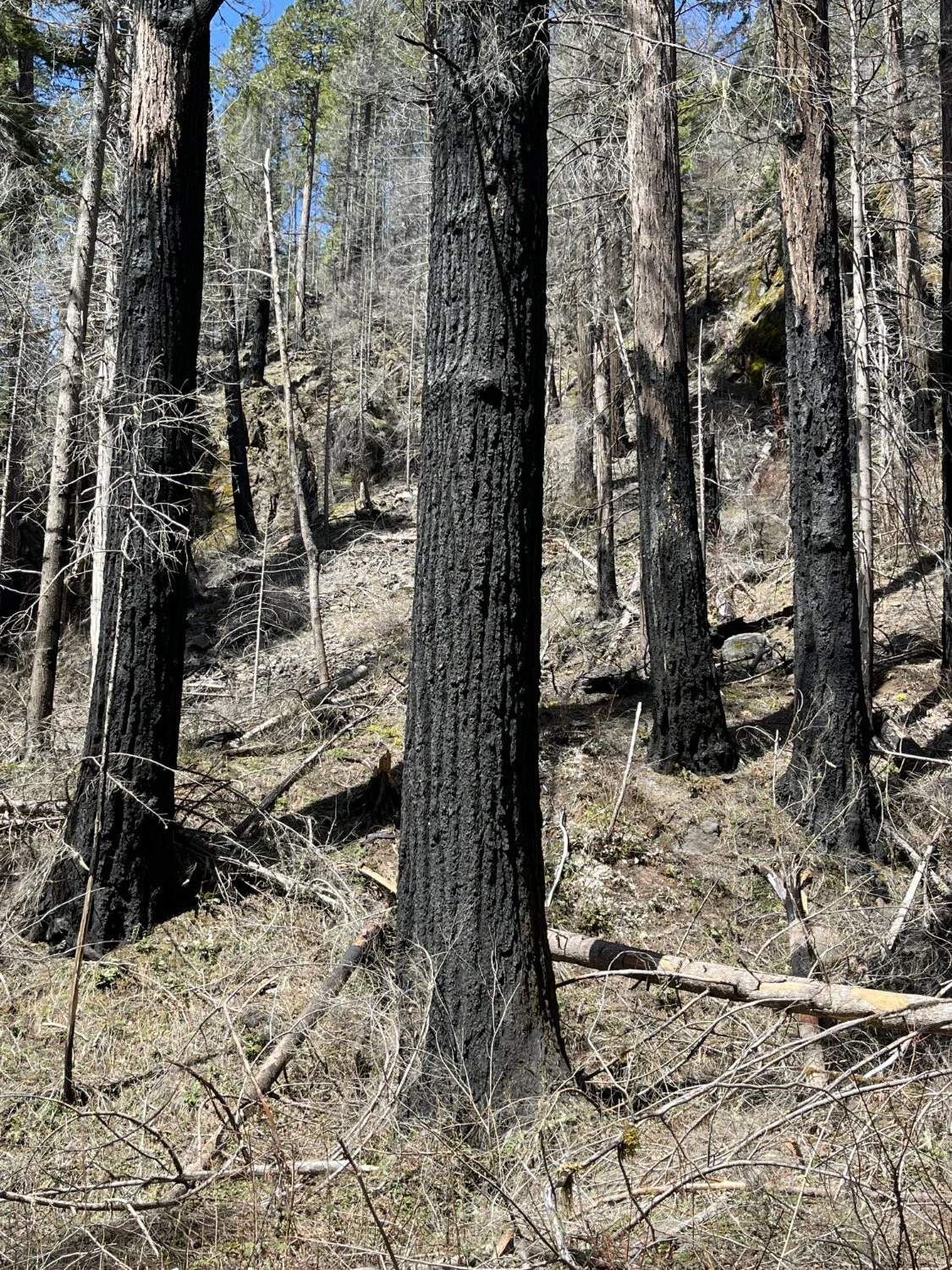
Scorched and dead
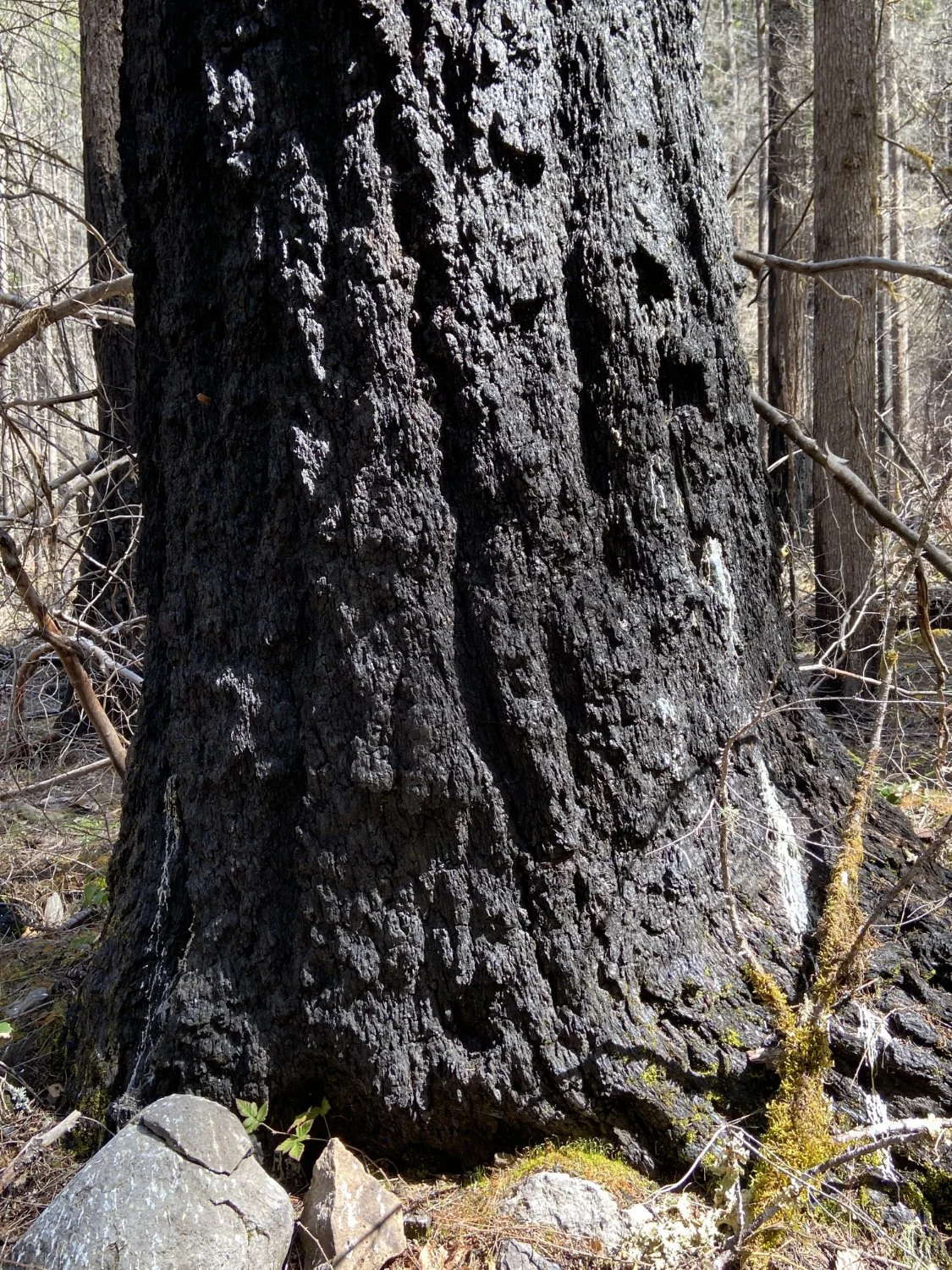
Scorched and alive


